CLASS OF 1956
Deak Roberts

PROLOGUE:
The following is a quote from Gary Williams ‘56: “Aviation has been my passion, my vocation, and my source of much joy throughout my life. I have flown in all manner of weather in many different aircraft. Jungle, desert, combat, over water, with sling loads, International, from below sea level to 51,000 feet and I have landed at the highest airports in America at Leadville, Colorado; and in Europe at Samedan, Switzerland; and the World at La Paz, Bolivia. I have been blessed with good health, good jobs, and the pleasure of working with and for outstanding people.”
We know Gary Williams as a quiet, unassuming, very nice guy, but when it comes to fighting for the United States of America, you will discover in reading this that he volunteered to go to Vietnam twice where he flew many combat missions in Slicks (no arms except self-protection on the helo) and Gunships. In truth, Gary Williams is a true American Hero, and this is the story of his life to date.
MAJOR GARY L. WILLIAMS, U.S. ARMY-RETIRED
Born on July 13, 1938, in the western panhandle Maryland mountain town of Cumberland, just north of West Virginia, Gary led a rather uneventful life until going to Greenbrier Military School (GMS) in Lewisburg, West Virginia. Actually, he didn’t exactly distinguish himself there, having only advanced to the rank of Corporal in Company “C”, but he did get a first class high school education and achieved the basics for becoming a principle-based leader and gained an appreciation for Duty, Truth, and Honor. He graduated in June with the Class of 1956.
Born on July 13, 1938, in the western panhandle Maryland mountain town of Cumberland, just north of West Virginia, Gary led a rather uneventful life until going to Greenbrier Military School (GMS) in Lewisburg, West Virginia. Actually, he didn’t exactly distinguish himself there, having only advanced to the rank of Corporal in Company “C”, but he did get a first class high school education and achieved the basics for becoming a principle-based leader and gained an appreciation for Duty, Truth, and Honor. He graduated in June with the Class of 1956.
At this point in his life, Gary just wasn’t into any more academics and in July joined the U.S. Army Reserve where he served in various units while being more of a party animal than a student at Marshall University in Huntington, WV. Higher education just wasn’t working for Gary, so he went to work for Union Carbide Corporation in South Charleston, WV, for a short period before taking a job with the Hafner Coffee Company in Pittsburgh, Pennsylvania.
Schooling and work in the civilian world were not working for Gary, so in March of 1958, he enlisted in the Regular U.S. Army and went through Basic Training at Ft. Knox, Kentucky. At the end of the training cycle there, Gary was chosen the Outstanding Trainee. From Ft. Knox, Gary was sent to Ft. Rucker, Alabama, for Advanced Individual Training (AIT) in Aircraft Maintenance. This was still part of Basic Training and Gary’s first acquaintance with aircraft. He did well and went on to Tandem Rotor Maintenance. They kept him there as a Ground School Instructor, and he was made Crew Chief for the Assistant Commandant’s helicopter.
In October 1959, Gary was able to go to Infantry Officer Candidate School (OCS) at Ft. Benning, Georgia, where, in April 1960, he received his Commission as a 2nd Lieutenant in the U.S. Army. After that, he went to Ranger and Airborne schools in that order. Then, in September of 1960, he married his first wife in Ozark, Alabama, and returned to Ft. Rucker for the Officer Fixed Wing Aviator Course where he finished 1st in the Class.
Gary was transferred to the Yuma, AZ, Test Station in July of 1961 where he flew liaison and light freight aircraft. He flew the L-19 Birddog, then graduated to the L-20 Beaver which had a 7 passenger capacity, and ultimately the U-1A Otter which could hold 14 passengers. This went on for nearly two years when in May 1963, Gary got orders to go to Ft Wolters, Texas, to take the Rotary Wing Qualifications Course. He was about to fly Helicopters.
Three months later, he found himself in Korea flying helicopters in the Aero Scout Platoon supporting the 1/9 Cav in the first Cavalry Division. It was here he was promoted to Captain in January 1964. It was also here that the Command discovered Gary was the only dual-rated pilot left in the Aviation Battalion and was assigned to be the Maintenance Officer.
About a year later in September of ’64, Gary requested Infantry Officer’s Career Course back at Ft. Benning, and after completing that, he volunteered for Vietnam. In a few months, he was back at Ft. Rucker in Alabama for a CV-2 Caribou Pilot Transition Course, and two months later he was back in the Republic of Vietnam (RVN) in the 61st Caribou Company at Vung Tau City in southern Vietnam as Assistant Maintenance Officer. During this time, Gary made several runs over to Thailand in support of the JOINT U.S. MILITARY ADVISORY GROUP (JUSMAG) THAILAND. This was the U.S. Security Assistance Organization (SAO) in Thailand responsible for one of the largest Military Education and Training Programs in the world including all Joint Combined Bilateral Exercise Programs.
In the winter of 1966, Gary was transferred to “A” Company, 101st Aviation Battalion in Soc Trang where he flew the utility helicopters UH-1s (ULTRA HUEY), and in October of ’66 they needed Flight Instructors for the UH-1, and called Gary back to Ft. Rucker to be that instructor for the Contact Phase (first 1 to 2 months before transitioning to the TH-1 for advanced training). Gary wanted to get back into the action and volunteered again to go to Vietnam.
In October 1967, Gary was promoted to the rank of Major and was sent to Hunter Army Air Field at Savannah, Georgia. There he participated in the AH-1G Cobra (attack helo) Transition Course. His old buddy, Dick Ragland, who was Best Man at his wedding, was a Manager and Instructor in that program.
A couple of months later back in the Republic of Vietnam, Gary realized one of his most dreaded fears. His maintenance background got him assigned as Commanding Officer of the 167th Transportation Detachment supporting the 336th Assault Helicopter Company back in Soc Trang. Gary never got inside a Cobra again. He did, however, enjoy this tour and had fun flying from Hue to Camau scrounging up parts and flying as many combat missions as he could get in both Slicks (less armed helos) and Gunships. He did an amazing 1004 hours that year alone. Gary, during his military career, was awarded the Bronze Star, 43 Air Medals, the Purple Heart, the Vietnamese Cross of Gallantry, and other awards.
Gary’s stint in Vietnam came to an end in early 1969, and in February he was back at Ft. Rucker as the G-3 Plans Officer, and later Commanding Officer of the Warrant Officer Candidate Company.
In September 1970, Gary went to the University of Tampa’s Bootstrap Program to complete his Bachelors Degree in Economics. After that, in September 1971, he was sent to Ft. Leavenworth, Kansas, to Command and General Staff College. It was there, he made a decision to get out of the Army. Several things influenced that decision. To Gary, it was just another Trade School and wasn’t very impressive. Evaluations were coming up and he was in danger losing flight status and pay, a divorce was pending, and there was a prospect of a job in Iran with the new venture Bell Helicopter was forming to train pilots, mechanics, and support personnel for the nearly 500 helicopters that country was buying.
Gary found himself on Okinawa still owing the Army two years for Command and General Staff College, so they assigned him to be the Protocol Officer for the Recruiting Command. This was choice duty that required him to play a lot of golf and enjoy his remaining days in the regular Army. In March of 1974, Gary went to his final assignment as a Regular Army Officer. For this last assignment, he was sent to Ft. Monroe, Virginia, to be the Post S-3 (Operations & Plans).
A year later, Gary was in Esfahan, Iran, as a civilian where his job was as flight instructor in the UH-1 and the AH-1J Twin Engine Cobra helicopters. This was a time when the Shah of Iran, Reza Pahlavi, was consolidating his power and modernizing the Military. About a year later, Gary was promoted to Liaison Officer to the Imperial Iranian Army Aviation in Tehran with Advisor and Flying roles for the Shah and his underlings. In late ’77, he was promoted to Manager of Individual Training to oversee On-the-Job Training in the military units.
In May of 1976, Gary met Shahla who had just returned from England where she had trained to be a Physical Therapist. They were married on November 10, 1976. While in Iran, Gary noted several Army Reservists going out of the country for their annual two-week Active Duty For Training (ACDUTRA). They were actually going to places like Germany, Poland, and the United States. Gary decided to join the Army Reserve and he did it by mail. Not having a Reserve Commission and having been a Regular Army Officer when he resigned from the Army, Gary was given a grade determination of E-7 (Enlisted Rank). After that, he made three trips to Bremerhaven, Germany, for ACDUTRA. These were very special trips. He and Shahla would drive to England to visit Shahla’s parents; then, cross the Channel by ferry to Germany; then, drive back to Iran. Gary made a couple of other trips alone, one in each direction passing through England, France, Belgium, Germany, Austria, Yugoslavia, Bulgaria, Turkey, and Iran. He said it was like being part of a National Geographic documentary.
1978 marked the beginning of the end for the Shah. He imposed martial law and the country was paralyzed by strikes and demonstrations. The Shah fled the country in January 1979, and the Ayatollah Ruhollah Khomeini returned from exile to form the Islamic Republic of Iran. Gary’s job was gone and he returned to the United States and Boiling Springs, Pennsylvania, where he was paying for (he had only made two payments) a 144-acre farm. Being a member of the Army Reserve was a Godsend at this time, since it was his only income. Gary had advanced to E-8 and finally did retire at his highest rank, Major, with 21.5 years in Uniform. Gary made some money by subdividing his farm.
Early in his return to Pennsylvania, Gary was contacted by a family friend, who had bought a Robinson R-22 helicopter and asked Gary to pick it up in Torrance, California. He was to fly it to Pennsylvania and teach his friend how to operate it. It turned into being a marvelous adventure, seeing the breadth of our beautiful country from 500 feet. Later that year, in October 1979 Gary took a job as pilot for ERA Helicopters flying off-shore out of Lake Charles, Louisiana. The schedule for this job was two weeks on and two weeks off, so he could fly home to Pennsylvania and continue sorting things out.
Come June of 1980, Gary got hired by Mobil Oil Corporation. They were building their own in-house fleet of helicopters and hired 25 pilots within a year to service their off-shore oil operations. This was a good job and Gary moved Shahla and their daughter to Thibodaux, Louisiana. In early ’81, he was transferred to Mobil Pipeline Company in Dallas, TX , to fly a Merliin Turboprop. Gary and Shahla had a second daughter born there in 1982. November of ’82 marked a general economic downturn that caused Mobile to downsize the Dallas operation. They sold the Merlin and transferred Gary back to Louisiana where he flew Bell 206s, Aerospatiale Twin Stars, and a Sikorsky S-76. That job lasted for about 4.5 years.
In April ’87, Gary was transferred to Virginia to fly a Cessna Citation III for Mobil US Marketing & Refining out of the Dulles Airport. The plane was an Executive Jet carrying 7 passengers with cruising speed of around 465 knots. He flew all over the country plus Canada and Mexico. The Mobile Marketing people took good care of the flight crew and gave them tickets for all the events they were attending. Mobil sponsored several NASCAR and INDY car racing teams, and Gary was fortunate to have attended races at every NASCAR venue and most INDY tracks. In ’89, he started flying the Gulfstream IV, another twin-engine executive jet that was larger and faster and could fly further. Since Mobile was an International Corporation, Gary got to visit over 130 countries and territories over six continents. Mobile was also sponsor for the West/Mercedes/McClaron Formula 1 team and Gary got to attend races at every Formula 1 track in the world.
Gary also got to take short vacations (six weeks to three months) in such places as Nigeria, Singapore, and Indonesia. [Editor’s Note: If that is short, I want to know what is long.] A special career highlight for Gary was being part of the team that established the first private corporation flight department in China. We took a Citation III there and stayed 10 months. Gary said “I was most fortunate to have flown for the premier corporate flight department in well maintained, state-of–the-art machines to so many places on this planet.”.
Around May of 2000, Gary retired from Mobil when it was bought by Exxon, but he continued to fly as a freelance contract pilot until 2003, and flew for such companies as IBM, AOL, MCI, and some Charter Companies in Norfolk, VA, and Easton, MD. In 2002, he bought his own Piper Cherokee 140 and has flown it over 100 hours per year every year.
Gary now lives with his wife, Shahla, on a small farm in Waterford, Virginia, where he raises a few head of beef cattle. He currently has a bull and five cows and looks forward to the new calves in Spring. He has his daughters and their families living nearby and enjoys the three Grandchildren often. Shahla still works as a full-time Physical Therapist, and Gary says he is spending too much time on a ladder fixing their 1827 vintage home. He is Active in Freemasonry and the Shriners, and he also comes to the Greenbrier Military School Alumni Association Reunions in Lewisburg, West Virginia, and he attends the “Greenbrier Day” events every May in Wintergreen and at Fork Union Military Academy in Virginia.
Author’s Comment:
I have known Gary Williams since we graduated together from Greenbrier Military School in 1956. The only flaw in Gary’s history that I know of is that he was not a member of Company “D” at GMS. We are going to overlook that, because he is one of our more outstanding graduates, and it is obvious to me that Gary carried much of what he learned at Greenbrier Military School with him throughout his life. Anyone that knows Gary knows a nicer person does not exist. He and his lovely wife, Shahla, are simply outstanding people and I am proud to call them my friends. Gary is a true American Hero. He used his love for aviation in the service of his country for over 21 years, and I know we are all proud of his service. During that service, he went far beyond the call of duty by volunteering to go into the Vietnam war zone (twice), flying combat missions whenever he could, constantly striving to excel, advancing in rank to take on more responsibility, and becoming an Officer from among the Enlisted ranks. Throughout his military and civilian careers, Gary was always willing to go anywhere, and do whatever was needed to get the job done. We could call him “Get ‘er done, Gary”, and while that would be accurate, it would be a little crass, and inappropriate for one who is as deserving of respect as Gary Williams. Next time you see Gary, stop and say “Hi” and thank him for what he has done for our country. I personal think he needs to stay off those ladders. I know he has seen a lot of combat, but those ladders are really dangerous. I wish him continued enjoyment of his retirement and an occasional climb back into a cockpit, and I look forward to seeing him in Wintergreen and Fork Union in May, and our annual GMS Alumni Reunion in October. Greenbrier Forever.
Deak
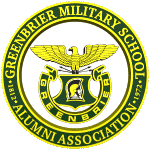

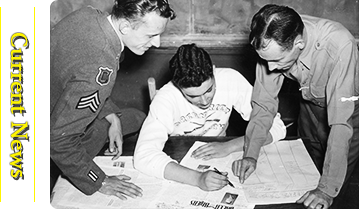
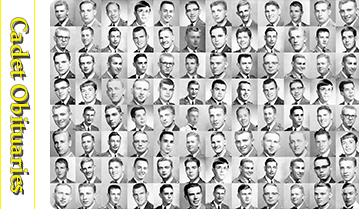

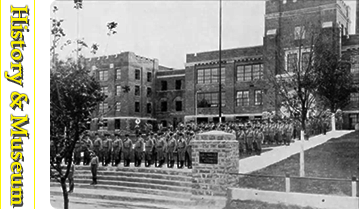



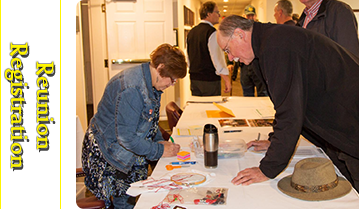
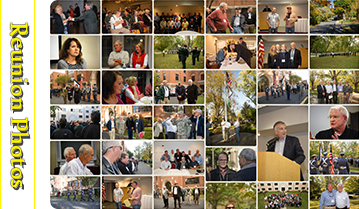

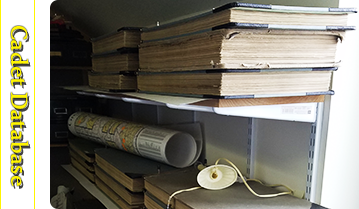
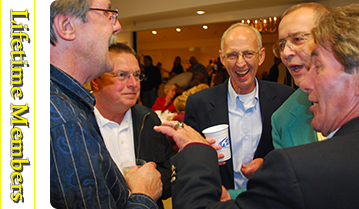
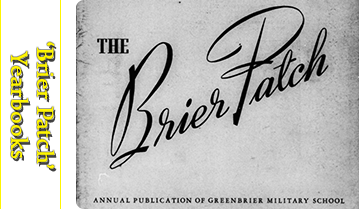



Comments
Major Williams
Although many may know the "civilian" side of Major Williams, I know the Airborne/Ranger side!!! So I will tell one story that maybe he forgot but I will always remember. It was summer of 1968, Soc Trang Vietnam, and I was assigned to be the Crew Chief of his UH-1 Huey helicopter. To say that he was an imposing figure is an understatement! Here I am, just turned 19 and just finished Aviation School. I had jungle fatigues that were a size too big and looked baggy and very unmilitary! He never said anything to me but watched how I conducted my work. I was very detail oriented and a perfectionist. In less than one week I realized Major Williams was a no nonsense Aircraft Commander, always looked sharp, dressed perfectly, and was a role model for ANY officer in our company. I knew I wasn't up his standards. So on the 3rd or 4th day I walked up to the ship (helicopter) while he was standing there and saluted. He looked at me, up one side and down the other. You see I didn't show up in those baggy jungle fatigues! I had on my Stateside Fatigues, pressed and lightly starched, boots spit shined, and looking "professional". He returned the salute and commented, "that's the best I've ever seen you" and walked away! Man of few words but made the point! None of the other crew chiefs EVER had starched-pressed fatigues and spit shined boots except the crew on Major Williams ship! Whenever we went to other locations you KNEW we were Major Williams crew! Maybe later I'll tell another story!